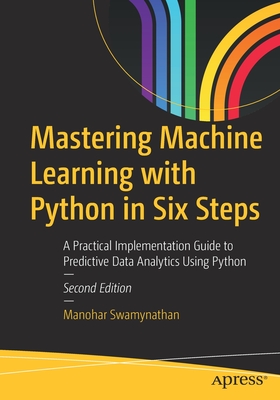Materials Data Science: Introduction to Data Mining, Machine Learning, and Data-Driven Predictions for Materials Science and Engineering
Sandfeld, Stefan
- 出版商: Springer
- 出版日期: 2024-05-09
- 售價: $3,790
- 貴賓價: 9.5 折 $3,601
- 語言: 英文
- 頁數: 618
- 裝訂: Hardcover - also called cloth, retail trade, or trade
- ISBN: 3031465644
- ISBN-13: 9783031465642
-
相關分類:
Machine Learning、Data-mining、Data Science
海外代購書籍(需單獨結帳)
相關主題
商品描述
This text covers all of the data science, machine learning, and deep learning topics relevant to materials science and engineering, accompanied by numerous examples and applications. Almost all methods and algorithms introduced are implemented "from scratch" using Python and NumPy.
The book starts with an introduction to statistics and probabilities, explaining important concepts such as random variables and probability distributions, Bayes' theorem and correlations, sampling techniques, and exploratory data analysis, and puts them in the context of materials science and engineering. Therefore, it serves as a valuable primer for both undergraduate and graduate students, as well as a review for research scientists and practicing engineers.
The second part provides an in-depth introduction of (statistical) machine learning. It begins with outlining fundamental concepts and proceeds to explore a variety of supervised learning techniques for regression and classification, including advanced methods such as kernel regression and support vector machines. The section on unsupervised learning emphasizes principal component analysis, and also covers manifold learning (t-SNE and UMAP) and clustering techniques. Additionally, feature engineering, feature importance, and cross-validation are introduced.
The final part on neural networks and deep learning aims to promote an understanding of these methods and dispel misconceptions that they are a "black box". The complexity gradually increases until fully connected networks can be implemented. Advanced techniques and network architectures, including GANs, are implemented "from scratch" using Python and NumPy, which facilitates a comprehensive understanding of all the details and enables the user to conduct their own experiments in Deep Learning.
商品描述(中文翻譯)
本書涵蓋了與材料科學和工程相關的所有數據科學、機器學習和深度學習主題,並附有眾多示例和應用。幾乎所有介紹的方法和算法都使用Python和NumPy從頭實現。
本書以統計學和概率論的介紹開始,解釋了隨機變量和概率分佈、貝葉斯定理和相關性、抽樣技術和探索性數據分析等重要概念,並將它們置於材料科學和工程的背景下。因此,它既是本科和研究生學生的寶貴入門書,也是研究科學家和實踐工程師的復習資料。
第二部分深入介紹了(統計)機器學習。它從概述基本概念開始,然後探索了各種監督學習技術,包括回歸和分類的高級方法,如核回歸和支持向量機。無監督學習部分強調主成分分析,還涵蓋了流形學習(t-SNE和UMAP)和聚類技術。此外,還介紹了特徵工程、特徵重要性和交叉驗證。
最後一部分關於神經網絡和深度學習旨在促進對這些方法的理解,並消除它們是“黑盒子”的誤解。復雜性逐漸增加,直到可以實現完全連接的網絡。高級技術和網絡架構,包括GAN,都使用Python和NumPy從頭實現,這有助於全面理解所有細節,並使用戶能夠在深度學習中進行自己的實驗。
作者簡介
作者簡介(中文翻譯)
Prof. Dr. Stefan Sandfeld 是德國尤利希研究中心高級模擬研究所(IAS-9)材料數據科學和信息學的主任,同時也是德國亞琛工業大學(RWTH Aachen University)的材料數據科學和材料信息學教授/主席。











